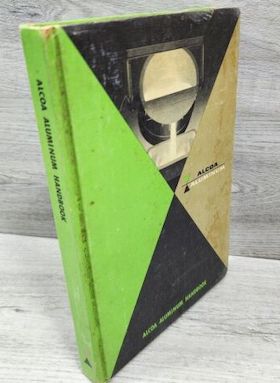
-----
2024-T4 vs. 2024-T351 MATERIAL
Q. What is the difference between 2024-T4 and 2024-T351? Our customer has asked for a 2024-T4 (rod) but I am having trouble finding the T4 material.
Michael Markstromprecision tool & die - Sioux Falls, South Dakota, United States
2007
A. Hi Michael,
T351 means "solution heat-treated, stress relieved through controlled stretching and naturally age hardened. The products are not straightened after stretching".
T4 means "solution heat-treated and naturally age hardened".
Now if your customer is asking for RODs in 2024 - T4 temper, then make sure that after extrusion the rods are solution heat-treated but no artificial age hardening treatment.
Good luck.
Basu
- Dubai, U.A.E.
2007
Q. Hello
my name is Marius, I am a student at an engineering Faculty from Romania.
For my final project I need some information about one heat treatment for AA 2024.
I want to ask you if it is a heat treatment for aa 2024, and after this heat treatment to obtain a minimum yield stress value of 350 MPa
- Buzau, Romania
2007
Q. Hi, I'm a drafter in the automotive industry. I came across some of our older drawings this morning that specify Aluminum 2024-T3511. No one here knows the difference between T351 and T3511. Can someone help specify the main difference between the two? Thanks!
Aaron BizzellDesign drafting - Clover, South Carolina
April 21, 2008
A. The difference between t351 and t3511 is that t351 receives no further straightening after stretching and the t3511 receives minor straightening after stretching to comply with standard tolerances per machinist handbook.
Curt Cantrell- Fayetteville, Tennessee, USA
January 31, 2011
Q. Hi.
Do you know of any books that will have all this information? I.e. a book which will specify the differences between T3, T351, T3511, T4, T42, T6, T6511, etc -- not only for 2024, but 7075, 6061, etc.
Thank you.
- Langley, BC, Canada
May 3, 2012
Q. Dear all, can you help me, where can I find thickness tolerance (geometrical data) for 2024 T4? Thank you.
Vasabi Suspent- Munich, Germany
June 5, 2018
Aluminum: its forms, alloys, and tempers"

on eBay or Amazon
or AbeBooks
(affil link)
A. Hi Guillermo. The "T" series are 'thermally treated tempers'. The Aloca Aluminum Handbook explains it in the first few pages, then goes on to tabulate all sorts of data and properties for aluminum shapes. Good luck.
A. Hi Vasabi. The tolerances are going to depend on the shape, and they may or may not depend upon the alloy (depending on the shape). The Alcoa Aluminum Handbook has subchapters on tolerances for each of its sheets & plates, wrought products, extruded products, wire, etc.
Regards,

Ted Mooney, P.E.
Striving to live Aloha
finishing.com - Pine Beach, New Jersey
Ted is available for instant help
or longer-term assistance.
Q, A, or Comment on THIS thread -or- Start a NEW Thread